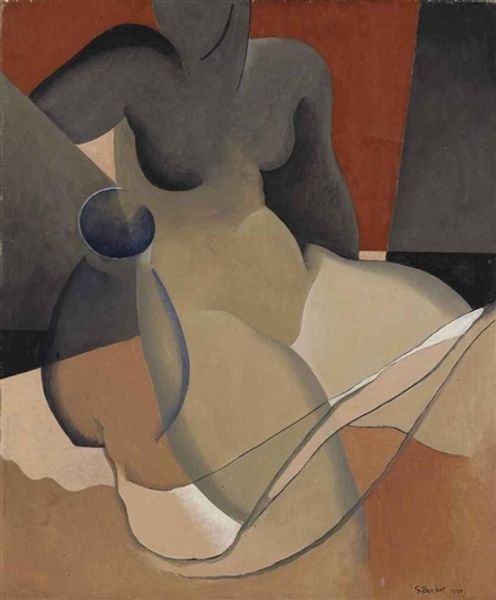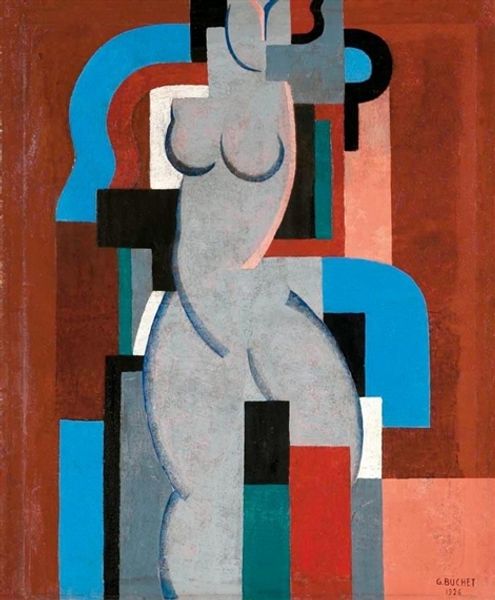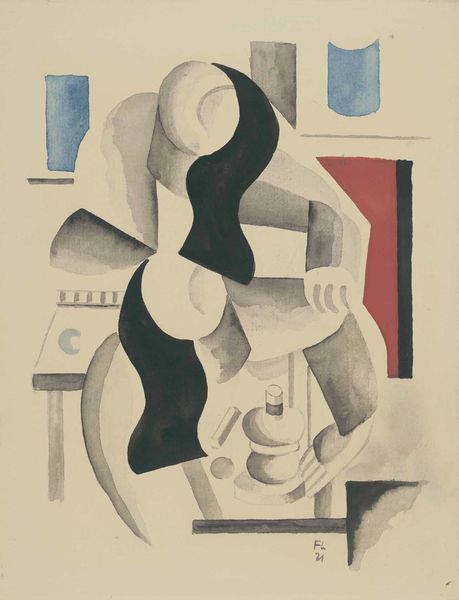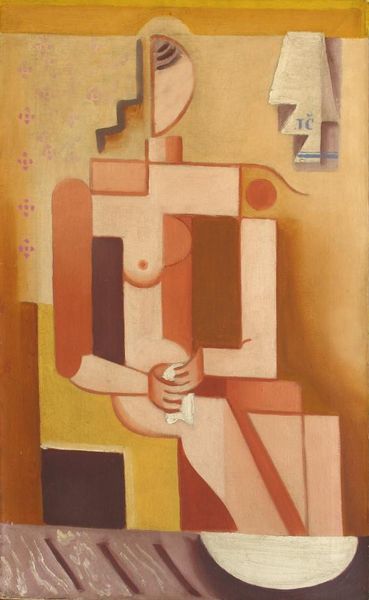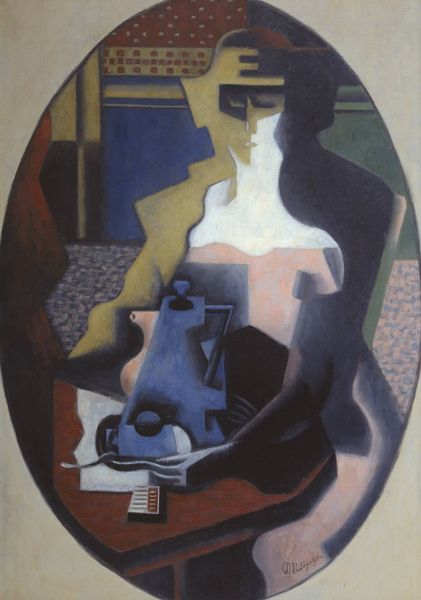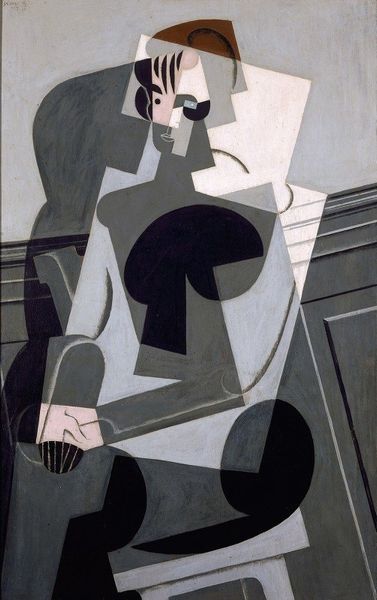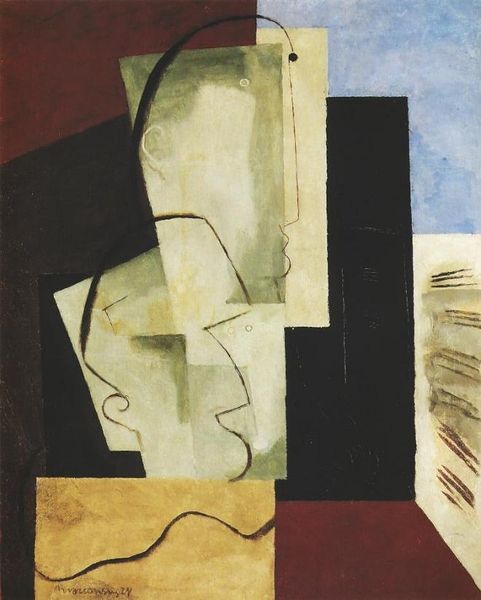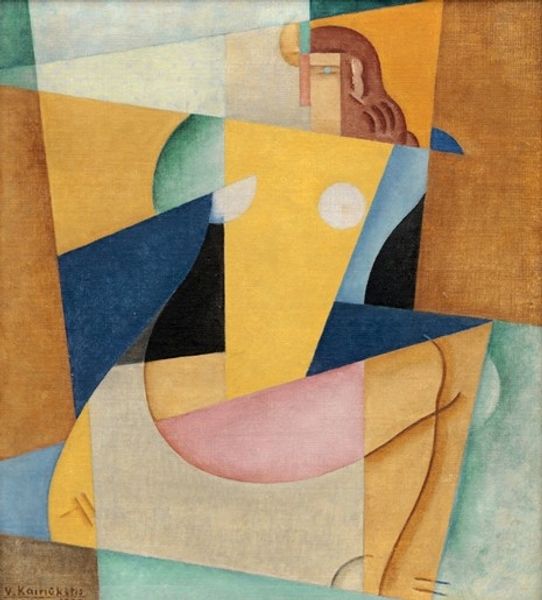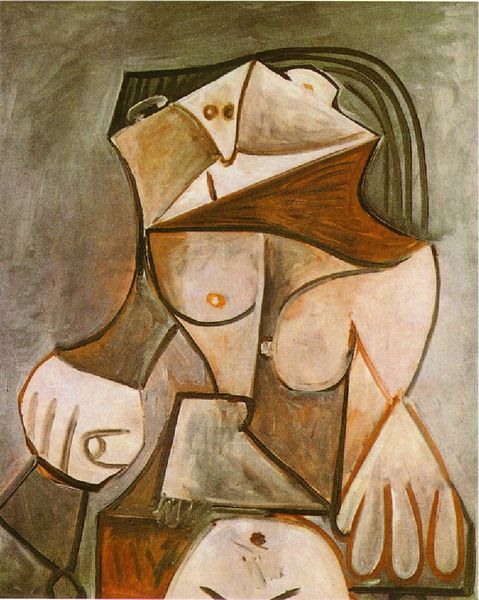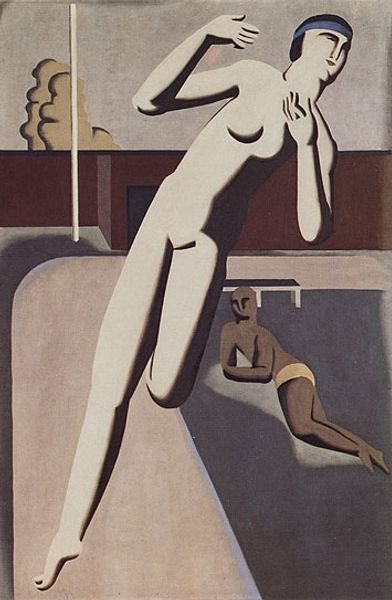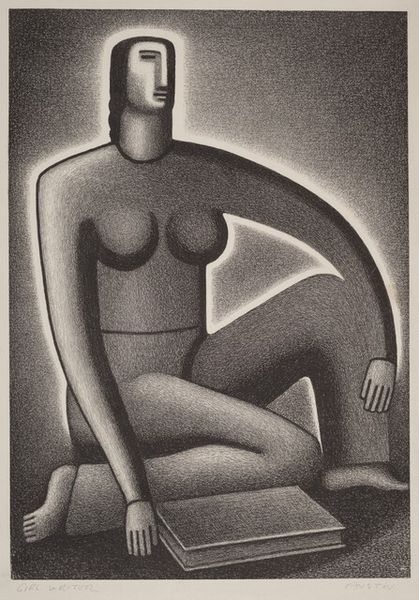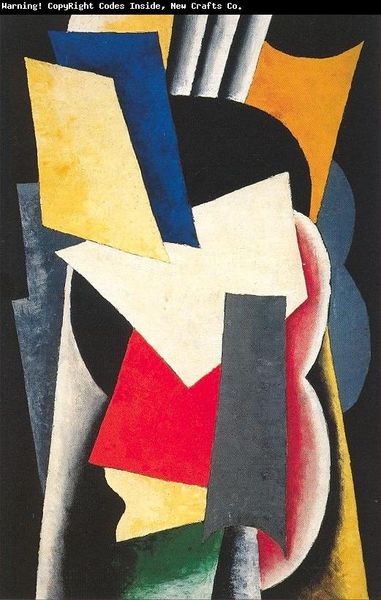
drawing, painting, oil-paint
#
portrait
#
art-deco
#
drawing
#
painting
#
oil-paint
#
figuration
#
oil painting
#
neo expressionist
#
portrait art
#
fine art portrait
Copyright: Gustave Buchet,Fair Use
Editor: This is Gustave Buchet's "Three Women," painted around 1930. It's an oil painting, and what strikes me is its sort of cool, almost detached representation of the female form. How do you interpret this work? Curator: It's fascinating to consider Buchet's work in the context of the interwar period. Public discourse about the body shifted drastically during this period and how these artists visualized it on canvas or in sculpture reflects that change, particularly within discussions surrounding women. Does it suggest a specific power dynamic, or perhaps a commentary on the idealization of the female body in art history? Editor: I see what you mean. It definitely disrupts traditional nudes, right? It's almost like he's stripping away some of the expected sensuality. The geometric shapes around them seem almost to objectify them even further, in a sense? Curator: Precisely! And how might that relate to the broader socio-political landscape? Consider the rise of industrialization and mass production during this period, which perhaps found its way to impact art production as well. Buchet seems very interested in conveying how society's visual systems of power intersect. Editor: That's a really interesting way to see it, by thinking of it through social issues around body politics! I hadn't considered it in that context of objectification and industry before. Thanks. Curator: The public function of art isn't always visible. Thinking about history offers such a broader framework. Editor: It really does. I will remember to think about this and will try and contextualize even my favorite works in history and sociopolitical issues!
Comments
No comments
Be the first to comment and join the conversation on the ultimate creative platform.
